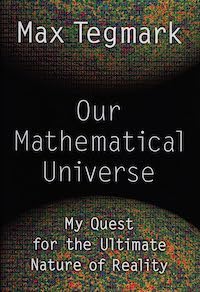Our Mathematical Universe: My Quest for the Ultimate Nature of Reality
Like an ostrich with its head in the sand, we humans have repeatedly assumed that all we could see was all that existed, hubristically imagining ourselves at the center of everything.
This book was a good broad intro to various modern cosmological ideas mixed with the author’s personal experiences and philosophical takes. For a broad overview, the book was excellent.
The middle section was most compelling. In this section, the author described four types of parallel universes which could possibly exist based upon what we currently know. These are thought-provoking possibilities and fun to imagine. These four types are described below:
- Type 1 — In an infinite space, there are many very similar copies of us somewhere, very far away. Small variations in state lead to a wide variety of different results in these other spaces.
- Type 2 — Our inflation bubble is just one of many. In other inflation bubbles some fundamental constants might be slightly or vastly different than in ours. Some are habitable. Some are not.
- Type 3 — This one is related to quantum mechanics and waveform collapse. Every time a quantum decision is determined, the universe splits. What appears to us as quantum randomness is one branch on that path.
- Type 4 — Our reality is a mathematical structure, one of many. Some are habitable, some are not. I truly like the Mathematical Universe Hypothesis (MUH) that Tegmark presents and defends as a possibility as part of this.
As an aside, one of my favorite out-of-context quotes from the book is below—
To the bird, reality is the geometry of the pasta.
